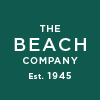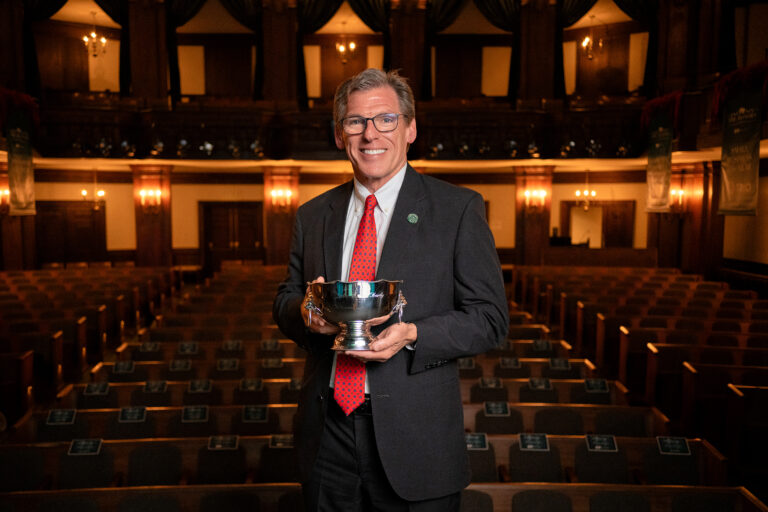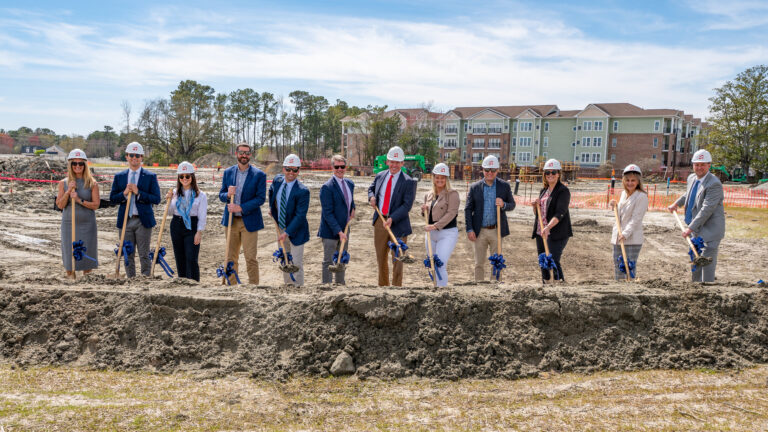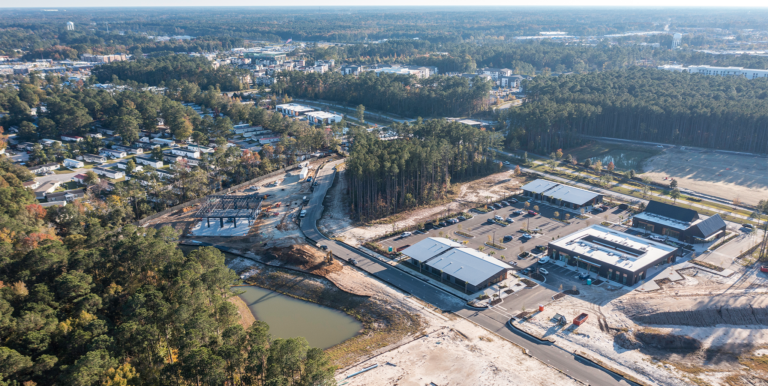Columbia Business Monthly, a go-to resource for Columbia-area business news, recently published an article illustrating upcoming commercial and residential projects across South Carolina. The report highlighted two of The Beach Company’s exciting mixed-use communities in progress: Canvas in downtown Greenville and The Jasper in Charleston’s historic district.
By Cindy Landrum
When the coronavirus pandemic began shutting down the economy in March, Greenville Area Development Corporation President and CEO Mark Farris expected development activity to grind to a halt, too.
It didn’t.
“We’re certainly below where we normally are this time of year in terms of projects, but we continue to have consultants call. We continue to have companies call. We continue to have requests for proposals to respond to,” he said. “It’s frankly surprising to me the activity that we’re having.”
Projects in Charleston and Columbia continued as well.
In Charleston, office construction on the Peninsula continues, and residential development continues to boom.
“Despite the pandemic, there are still construction projects and developments in just about every major pocket of Columbia,” said Peyton Bryant, senior broker and principal of NAI Columbia.
Stevie Field-Chavez, vice president of regional sales for GIS Planning, a company that provides online economic development solutions for corporate site selection, agrees.
“Projects are happening,” she said.
In Greenville County, Farris said he continues to receive inquiries from manufacturers, including food processing plants. “We’re not known as a food producing or processing state, but I think companies realize they need access to a system that is regional in nature,” he said.
Vermeer, whose founder invented the round hay baler, is building a new plant in the South Greenville Enterprise Park. The park is Greenville County’s first new industrial park in 20 years.
Greenville County is attracting interest from international companies, too, Farris said.
In addition, Farris expects some manufacturers that have put off expansions because of the Upstate’s tight workforce pre-pandemic may reconsider because unemployment has sharply increased during the pandemic.
“As crass as it sounds, given the morbidity of the coronavirus, there are opportunities out there,” he said.
CBRE Research’s 2020 Southeast U.S. Outlook Report, released in February, said speculative industrial development is reaching all-time highs as new tenants and developers find the Greenville market attractive. It said manufacturing remains an important component of the expanding local economy, and warehouse and distribution is greatly increasing its footprint.
Steve Smith, CBRE’s managing director of South Carolina, said the state has seen increased demand for warehouse space during the pandemic, which exposed weaknesses in having a global supply chain.
“We’re seeing logistics companies gobbling up space left and right, and not 50,000 square feet, but 500,000 square feet, and that’s going to continue,” he said during a recent roundtable conducted by Integrated Media, publisher of Greenville Business Magazine, Columbia Business Monthly and Charleston Business Magazine. “The industrial market was leading the way into this crisis, and it’s the market that will lead us out of this crisis along with multi-family.”
The Greenville market is experiencing record levels of multi-family development, according to the report. Recent absorption trends show that residents are eager for more product, as people are attracted to the urban work-live environment offered by downtown Greenville, it said.
The report said Greenville’s office market had corrected itself, returning to low vacancy levels, primarily in part to a handful of large leases. It said as the market continues to expand, demand for additional high-quality office space will come in the form of new suburban and urban infill Class A office development.
Smith and Farris said Greenville would continue to have a demand for office space, although what it looks like will change because of the pandemic.
Thomas Boulware, broker-in-charge and partner with NAI Charleston, said the economic drivers of Charleston were strong before the virus, and there’s no reason for that to change.
“Developers are long on Charleston and realize we have a robust market here,” he said.
Boulware said he expects an influx of people moving from the northeast, adding to the Charleston area’s already rapid population growth.
“The residential growth here is very strong, and I don’t see that slowing down. National homebuilders see Charleston as a growth market. The multi-family folks are still very active in our market, and I don’t see that slowing,” he said. “At one time, there was 10 years’ worth of demand if we continued building on the current pace, so there was a considerable backlog for folks trying to move to Charleston. I don’t see that slowing down.”
Industrial growth has been strong, too, he said.
The biggest question in the Charleston market is how quickly the hospitality industry rebounds, he said.
“Charleston is one of the top destinations in the world. That will not change,” he said. “The relief we’ll see is when people are flying on planes to get here versus driving. The question is, when does that happen? Is it 60 days, or is it six months?”
Bryant said because Columbia’s economy centers on the University of South Carolina, Fort Jackson and state government, Columbia hasn’t seen a significant commercial office building in quite some time, he said.
“We’re isolated here in Columbia. We don’t see real big swings up and we don’t see real big swings down. Greenville and Charleston have seen heavy growth, but they’re also susceptible that if things fall, they will fall in Charleston and Greenville more so than they are in Columbia,” he said. “It’s kind of a double-edged sword for us. We don’t get to enjoy the highs, but we also don’t have to worry about the lows.”
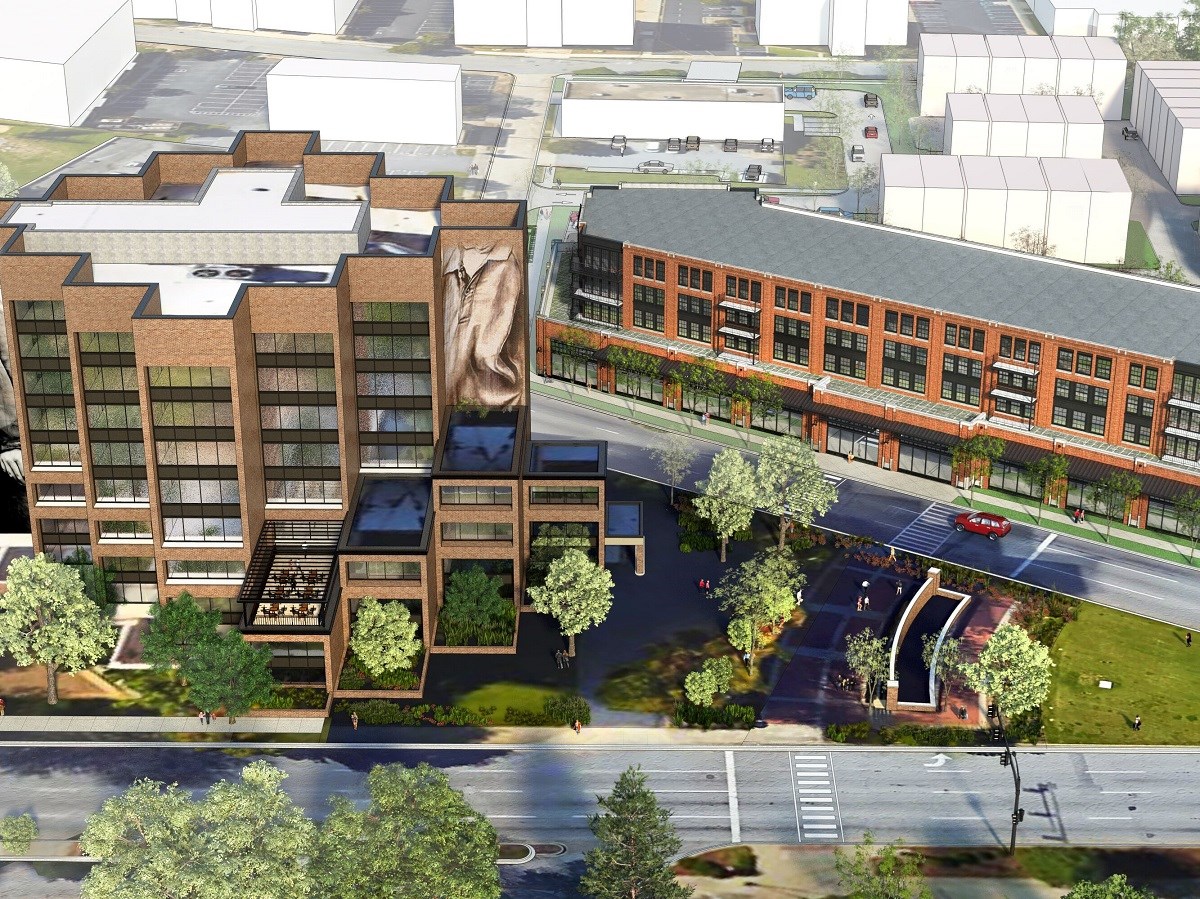
Instead, Columbia’s development centers on residential, hotels and retail. Bryant said he doesn’t expect residential projects to be affected if students return, even if it’s spring of next year.
“As long as the college experience of being here physically, living in an apartment or student housing, doesn’t change drastically, I don’t think these projects are in that much jeopardy,” he said.
After suffering the greatest performance declines in the history of the U.S. lodging industry during 2020, the nation’s hotels will benefit from what is expected to be a relatively rapid economic turnaround in 2021 and 2022, according to the June 2020 edition of CBRE’s Hotel Horizons forecast report.
The report also states that Charleston’s overall hotel occupancy in 2020 is forecasted to be at 44.5 percent, increasing to 60.9 percent in 2021.
“Charleston hotel market demand is forecast to decrease by 35.4 percent in 2020, but it is projected to rebound 35.7 percent in 2021. Hotel demand in Charleston has remained strong over the past several years and, despite a decline this year due to the current pandemic, the city should continue to benefit from increased interest in travel and its drive-to location,” said Jill Bidwell, senior director at CBRE Hotels.
It will take time for the state’s economy to recover from the effects of the pandemic. How long depends on each market because they rely on different sectors and how long it takes people to return to activities they did before the pandemic, said Chris Fraser, managing director for Avison Young’s South Carolina and Savannah, Georgia, offices.
“Politicians can spend a lot of time about opening up the economy,” he said. “But the economy is controlled by consumers. If you don’t go to the restaurant, it doesn’t matter what somebody says. You didn’t spend the money.”
The good news is that nothing that has happened during the pandemic or the resulting impacts on the commercial real estate markets to change the desirability of South Carolina as a place to live, Fraser said.
“We’ve been through recessions, big ones and small ones. Economically, this is no different than those. We’ll get through it because we’re in a growth market,” Fraser said.
Construction Continues
While the coronavirus pandemic closed much of South Carolina’s economy, commercial development continued in the state’s three major markets: Greenville, Columbia and Charleston. Here are some of the top projects:
GREENVILLE
Camperdown
Camperdown is a large mixed-use project on Greenville’s Main Street across from the Peace Center. Developed by Centennial American Properties, Camperdown includes a 140-room hotel, 217 apartments, 80,000 square feet of retail, offices, 18 condominiums and a plaza. It is expected to open later this summer.
County Square
The $1 billion County Square project is the largest redevelopment in Greenville history and will reshape downtown. The project would demolish the old shopping mall-turned-county headquarters to create high-end residences, retail and office towers. It would also include a new county government center designed by the architects who designed Apple’s new headquarters. The project cleared a major hurdle in February when the city approved the redevelopment plan.
Canvas
This project by Beach Co. will renovate the former BB&T building on Buncombe Street to create offices. Other plans for the full project include 48 multi-family apartment units, 31 townhomes and more than 21,000 square feet of retail space. Canvas Lofts are expected to open in the fall.
CHARLESTON
Nexton
Nexton is a 5,000-acre master-planned community in Summerville. Once built out, it will have thousands of homes along with offices, restaurants, retail and a regional hospital. In March, Lowcountry Hotels announced the grand opening of the Hilton Garden Inn-Homewood Suites and Lowcountry Conference Center.
WestEdge
WestEdge is a 60-acre master-planned development along the Ashley River adjacent to the Medical University of South Carolina and the Medical District and fronting Brittlebank Park and The Joe, home to Charleston’s Class A minor league baseball team. Currently, it includes 587 apartments, 138,000 square feet of office space, 500 hotel rooms, 33,500 square feet of retail space, a 50,000-square-foot Publix grocery store and 55,000 square feet of dining, event and meeting space.
The Jasper
The Jasper is a 12-story mixed-use building being constructed at 310 Broad St. in Charleston’s historic district. Developed by the Beach Co., The Jasper will include 75,000 square feet of Class AAA office space, 219 luxury rental homes and penthouses and a mix of dining and retail. The mixed-use community is scheduled to open later this year.
COLUMBIA
BullStreet
The transformation of the former state mental hospital campus downtown into the BullStreet District is continuing. Called the largest urban redevelopment project on the East Coast, the BullStreet District will contain residential, office space, restaurants and retail. It is anchored by Segra Park, the home to the Columbia Fireflies Class A minor league baseball team. It is in the sixth year in a planned 20-year build out.
The Palms on Lady
Developer Ben Arnold is building a six-story apartment building at the corner of Assembly and Lady streets where Moe Levy’s Army Store was once located. The ground floor of the building will contain restaurant and retail.
900 Block of Harden Street
Developers Gustavo Spoliansky and Trevor Carl Nelson plan to revamp the 900 block of Harden Street in Five Points. Their company Campus + Main plans to construct two new buildings and renovate others in the $1.5 million development. The block will have 9,100 square feet of retail. The company specializes in retail districts around college campuses
